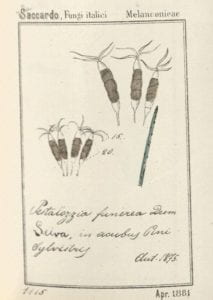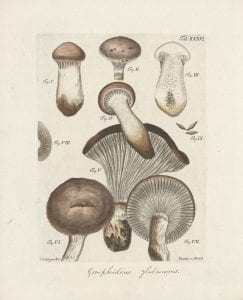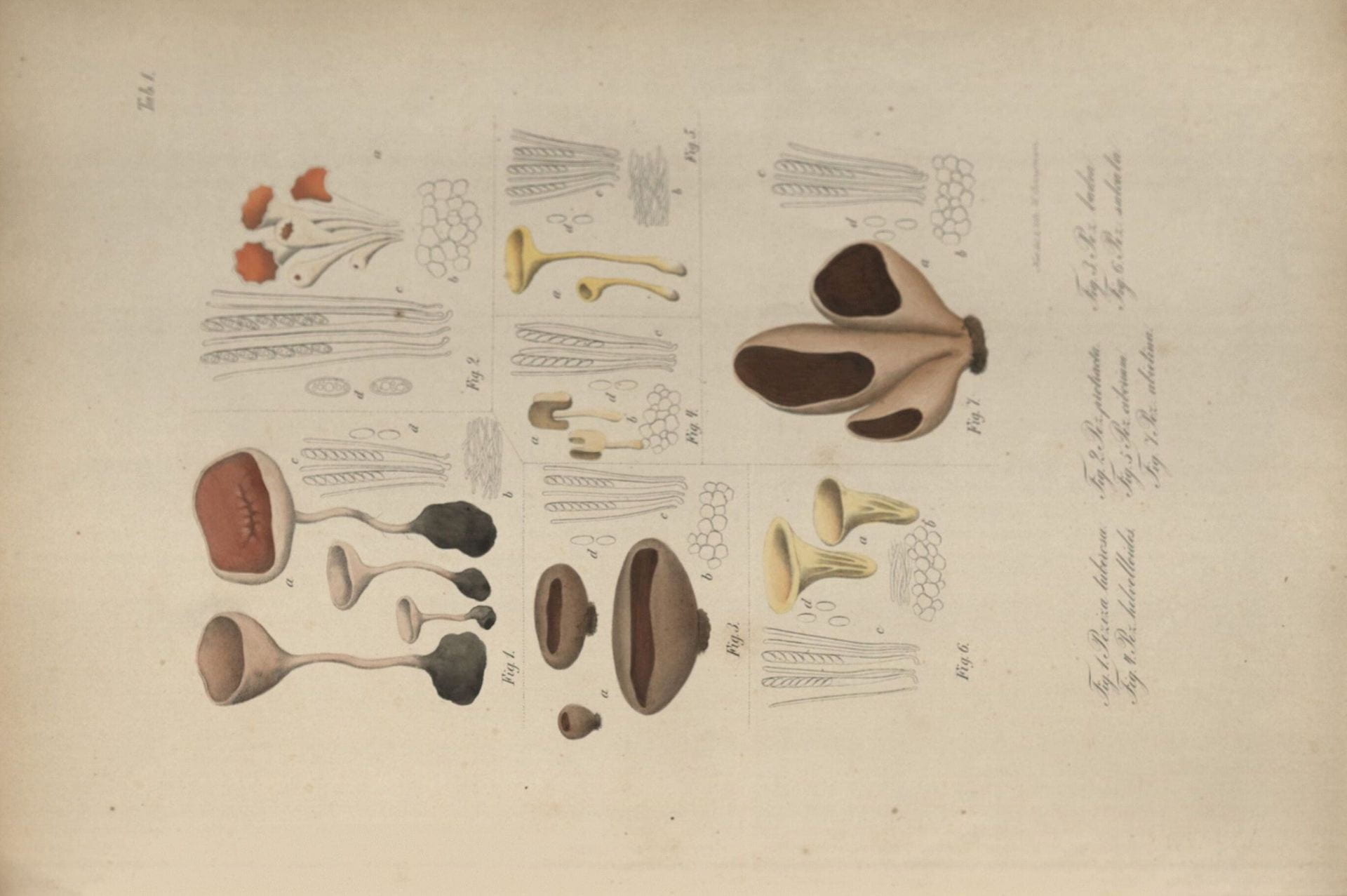Mushrooms, according to fungi expert Paul Stamets, “are the premier recyclers on the planet,” decomposing organic matter and reintroducing vital nutrients to the soil. While most often associated with the decomposition of wood, scientists have found that certain species of mushrooms can consume even the most pernicious of pollutants found in our environments.

Fungi italci autographice delineati: additis nonullis extra-Italicis,
1879
Pestalotiopsis microspora, illustrated in Pier Andrea Saccardo’s Fungi italci autographice delineati: additis nonullis extra-Italicis (1879), is a species of fungus that has been found to decompose polyurethane, a polymer used in commercial plastic products.

Fungorum qui Bavaria et Palatinatu circa Ratisbonam nascuntur icones nativis coloribus expressae, 1774-1780
Mushrooms have even been found to consume radiation in the lands around the Chernobyl Nuclear Power Plant in the Ukraine. Gomphidius Glutinosus, first described by German mycologist Jacob Christian Schäffer in his Fungorum qui Bavaria et Palatinatu circa Ratisbonam nascuntur icones nativis coloribus expressae (1774-1780), is believed to be capable of consuming Cesium-137, a radioactive isotope found in the environment as a result of nuclear disasters in Chernobyl and Fukushima, Japan.
Pier Andrea Saccardo
Fungi italci autographice delineati: additis nonullis extra-Italicis
1879
Jacob Christian Schäffer
Fungorum qui Bavaria et Palatinatu circa Ratisbonam nascuntur icones nativis coloribus expressae
1774-1780
CO2 PPM in 1774-1780: 278
CO2 PPM in 1879: 289
Additional Information
Penn State University Libraries is home to the Kneebone Mushroom Reference Collection, the private library of Penn State Professor Emeritus of Botany and Plant Pathology, Dr. Leon R. Kneebone.
